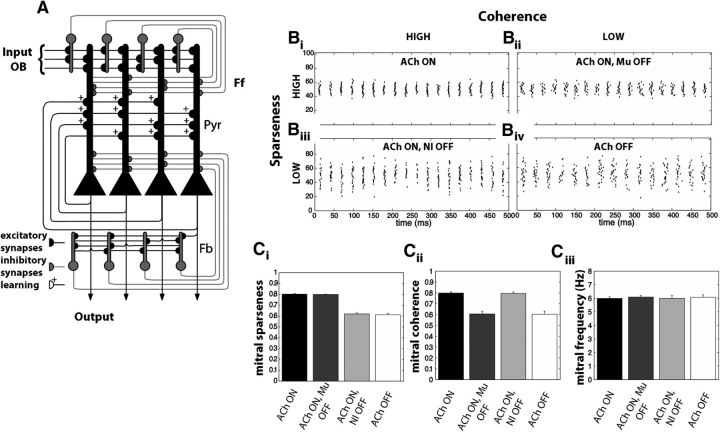Figure 3.
Computational model of OB and piriform cortex. A, Simplified structure of the piriform cortex. The system receives excitatory input from Mi cell axons in the OB that connect to Pyr and Ff cells. Pyr cells work as an autoassociative network, synapsing onto other Pyr neurons and to Fb cells. Both Ff and Fb interneurons make inhibitory synapses on Pyr cells (Stokes and Isaacson, 2010). The autoassociative connections between Pyr cells are subject to activity-dependent plasticity (+). B, We defined four groups of OB outputs based on the impact of ACh on different receptors. Bi, When both nicotinic and muscarinic receptors are on, the Mi activation pattern exhibits both high sparseness and high coherence (synchronization). Bii, When muscarinic receptors are off and nicotinic receptors are on, Mi output exhibits high sparseness but low coherence. Biii, When muscarinic receptors are on and nicotinic receptors are off, the Mi output exhibits low sparseness but high coherence. Biv, When both receptors are off, the Mi output has both low sparseness and low coherence. For ease of visualization, we here show a distribution centered on neuron #50. C, Average changes in network properties (±SEM) in each of the four configurations. The data in each panel are computed from 50 simulations with random odors. Despite the changes in sparseness (Ci) and coherence (Cii), the average firing frequency of the Mi output (Ciii) was kept constant at ∼6 Hz. This was done to isolate the effects of manipulating sparseness and coherence from the firing rate of Mi cells.

